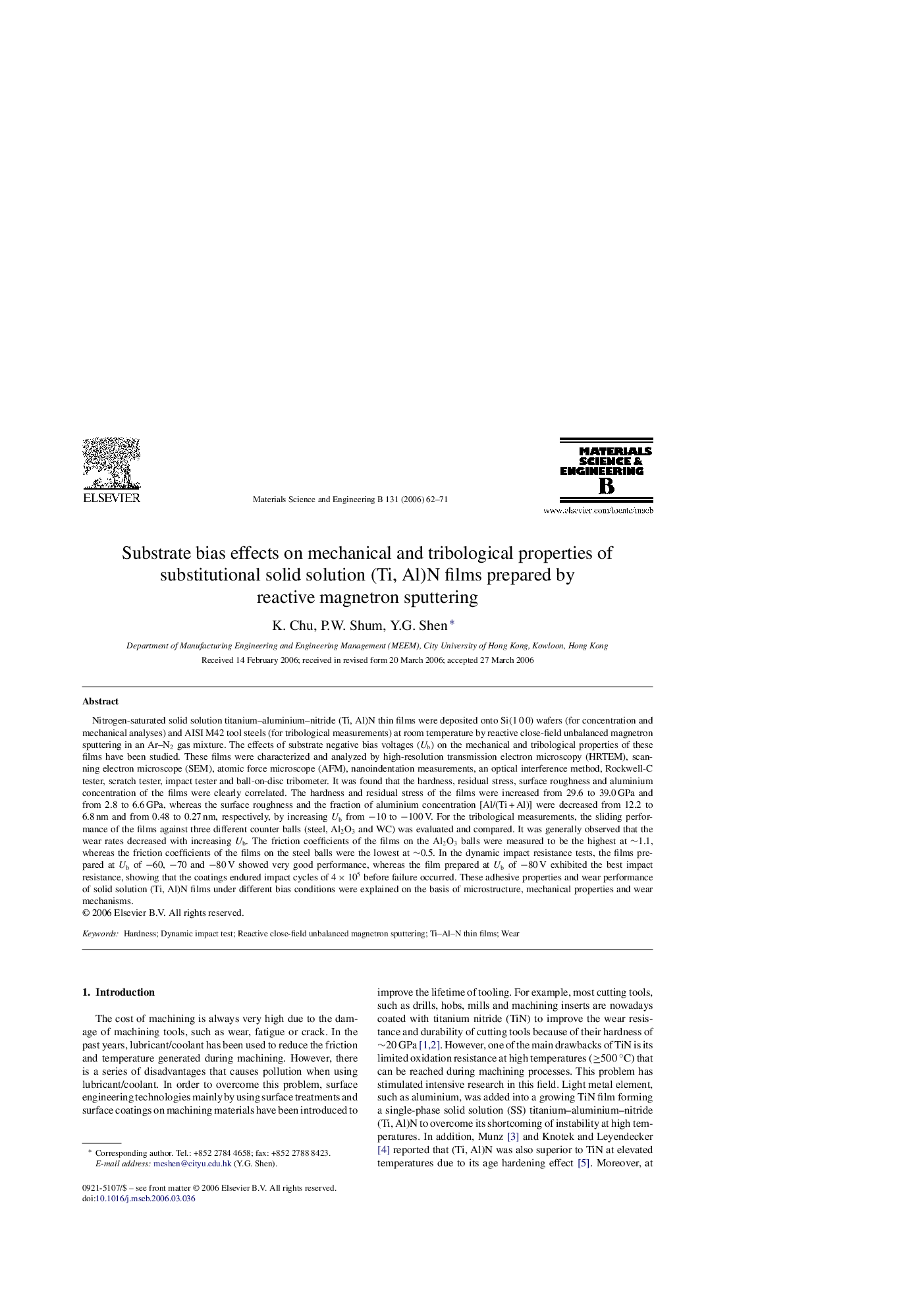| کد مقاله | کد نشریه | سال انتشار | مقاله انگلیسی | نسخه تمام متن |
|---|---|---|---|---|
| 1531892 | 1512020 | 2006 | 10 صفحه PDF | دانلود رایگان |

Nitrogen-saturated solid solution titanium–aluminium–nitride (Ti, Al)N thin films were deposited onto Si(1 0 0) wafers (for concentration and mechanical analyses) and AISI M42 tool steels (for tribological measurements) at room temperature by reactive close-field unbalanced magnetron sputtering in an Ar–N2 gas mixture. The effects of substrate negative bias voltages (Ub) on the mechanical and tribological properties of these films have been studied. These films were characterized and analyzed by high-resolution transmission electron microscopy (HRTEM), scanning electron microscope (SEM), atomic force microscope (AFM), nanoindentation measurements, an optical interference method, Rockwell-C tester, scratch tester, impact tester and ball-on-disc tribometer. It was found that the hardness, residual stress, surface roughness and aluminium concentration of the films were clearly correlated. The hardness and residual stress of the films were increased from 29.6 to 39.0 GPa and from 2.8 to 6.6 GPa, whereas the surface roughness and the fraction of aluminium concentration [Al/(Ti + Al)] were decreased from 12.2 to 6.8 nm and from 0.48 to 0.27 nm, respectively, by increasing Ub from −10 to −100 V. For the tribological measurements, the sliding performance of the films against three different counter balls (steel, Al2O3 and WC) was evaluated and compared. It was generally observed that the wear rates decreased with increasing Ub. The friction coefficients of the films on the Al2O3 balls were measured to be the highest at ∼1.1, whereas the friction coefficients of the films on the steel balls were the lowest at ∼0.5. In the dynamic impact resistance tests, the films prepared at Ub of −60, −70 and −80 V showed very good performance, whereas the film prepared at Ub of −80 V exhibited the best impact resistance, showing that the coatings endured impact cycles of 4 × 105 before failure occurred. These adhesive properties and wear performance of solid solution (Ti, Al)N films under different bias conditions were explained on the basis of microstructure, mechanical properties and wear mechanisms.
Journal: Materials Science and Engineering: B - Volume 131, Issues 1–3, 15 July 2006, Pages 62–71